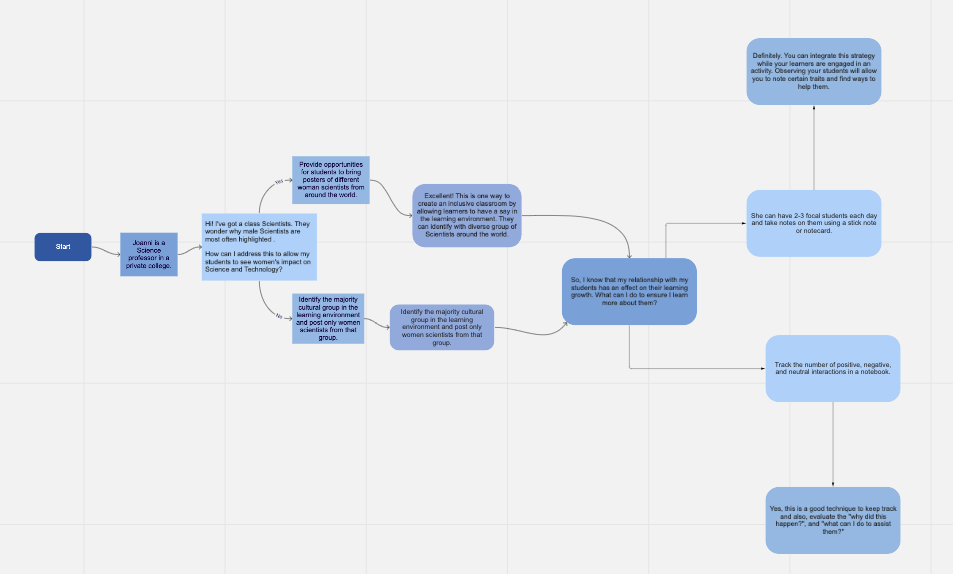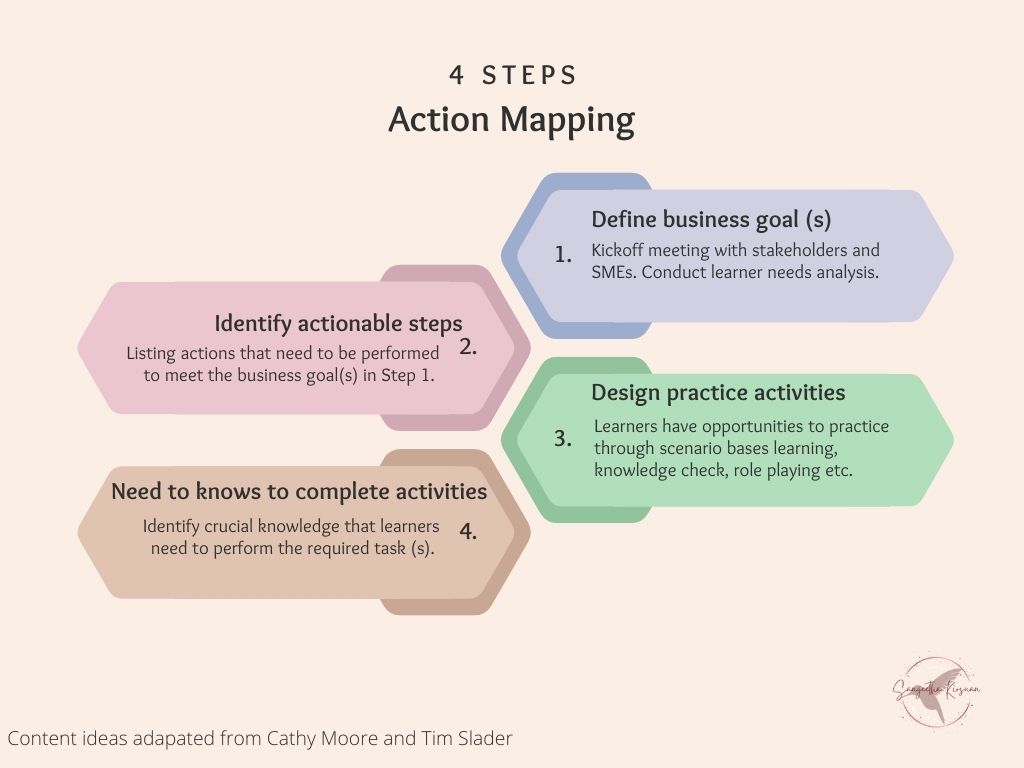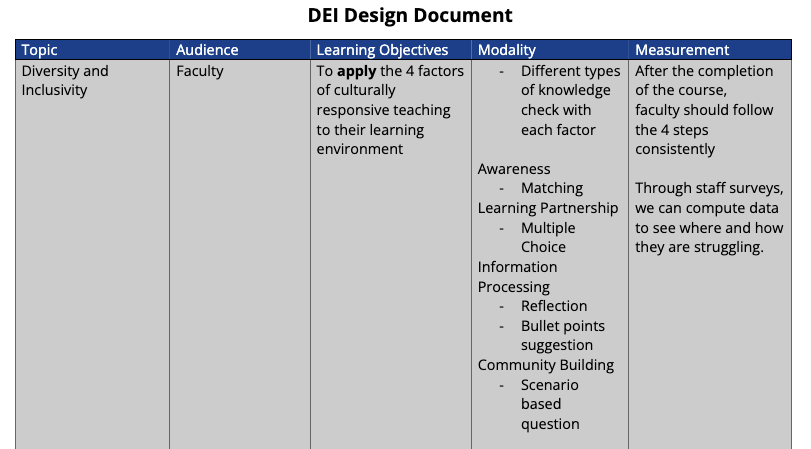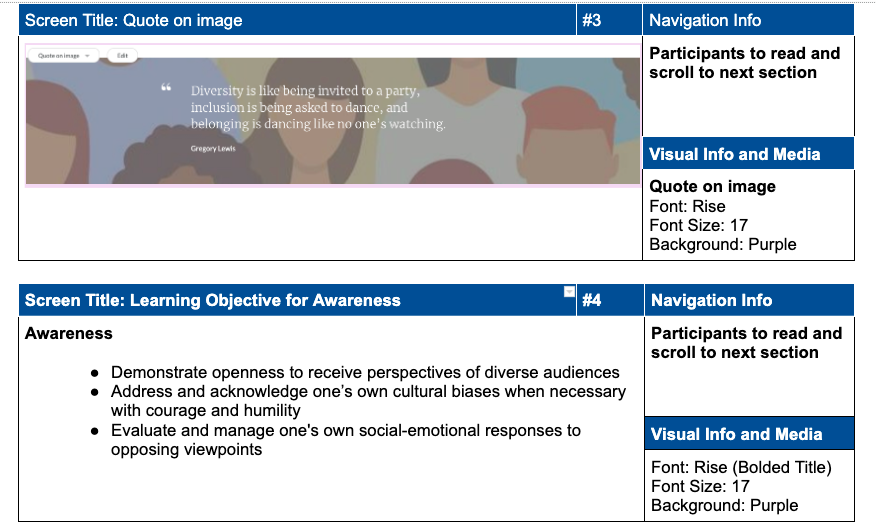Workplace Training Program
Diversity, Equity, and Inclusion
Organization Setting
This workplace training is an essential component to train all employees so that they can build awareness of unconscious bias, cultural competence, or other barriers to diversity, equity, inclusion (DEI), and belonging. This training program is tailored to higher education faculty. I have created an Articulate Rise DEI course with supporting materials as seen in the Canvas (LMS).
Project team
I completed this project expecting to have key stakeholders including senior administration, curriculum developers and at least 3 faculty as subject matter experts (SMEs).
Task Overview
This is a task based project for faculty to actively reflect and engage in the learning objectives of DEI. The course is divided into two sections. First section takes the learner through 4 factors of culturally responsive teaching where they need to reflect on their syllabus planning strategies. Second section provides practical suggestions for building an inclusive learning environment. Feedback is provided for the choices they make to allow them to understand organization policies.
Design Theory

I developed this eLearning through the use of the Culturally Responsive Teaching framework, Backward Design, and Cathy Moore’s branching scenario. It was essential to make the characters in the scenario relatable and someone they work with or their role. Learners will be able to actively reflect and use their prior knowledge.
Their responses and reflections will allow them to establish strategies to incorporate into their learning environments. The end goal is for learners to create an inclusive learning space where students will feel valued and respected. This also leverages on both “cognitive” and “constructivism” theories, where learners apply their learning through experiential scenarios.
Design and Development Process
- I detailed the project using a design document with the respective stakeholders in mind to achieve the goals in a stipulated timeline
- Next, I would have initiated a kick off meeting with SMEs to understand the content required for this course using Action Mapping.
- I developed a storyboard, including a prototype
- Once I had conducted research with current faculty, I would have analyzed the needs and gaps that need to be filled.
- Using the storyboard, eLearning course was developed using Articulate 360 Rise.



